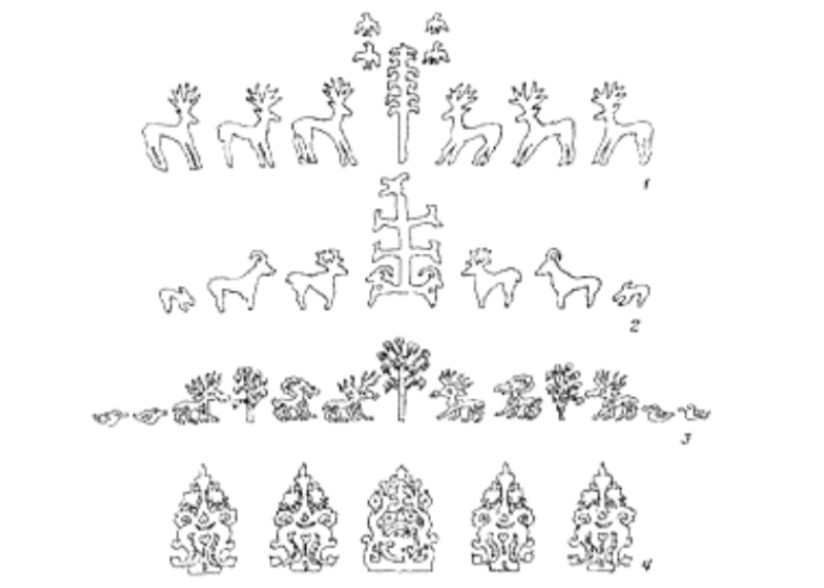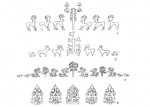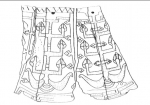--연구원 칼럼(舊)
객원연구원논문 The Image of World Tree 2
Chingis Akhanyanov 객원연구원

The attributes of the Korean and Siberian shamanistic costumes are well known by archaeological and ethnographic data. In the traditions of the Tungus-Manchurian peoples, a shaman’s headdress was decorated in the upper part with horns of taiga animals or metal plates pointing upwards, on the ends of which bells, ribbons, images of birds and some other ritual objects were attached.
Russian researcher Ionova interprets diadems as a sign of shamanism - Shamanism as one of the earliest forms of religion has been known in Korea since ancient times and has been the main religion for centuries. Shamans held a high social status. There were cases when they occupied the position of leaders and spiritual leaders. So in the early Korean state of Silla - in the sixth century AD, the king acted as the supreme shaman, as evidenced by the found golden royal crown in the form of a shaman tree or deer antler.
The status of a king shaman or leader shaman is quite typical for ancient societies. It is also typical when the shaman was also in the rank of civil servant. The chief often participated in the most important ceremonies.
All the attributes on the crown - these are classic images of the world tree - emphasize the sacred power of the ruler. A king who dominates both the social and cultural world has attributes such as a throne and a diadem. The world tree emphasizes the high status of the king.
The connection of the world tree with a female character is well known for the Iranian cultural world. This is very beautifully seen in the diadem of noble women from the Sarmatian tribe. Excavations made in South Central Russia. Symmetric images of goats, deer, birds in relation to the world tree are very typical. The high sacred status of these attributes of hats is obvious.
Very similar to tiaras from Korea - with their ornament, buckles of a plate of the Hunnu era from South Siberia
Top belt buckle plates. The material currently available allows us to trace in detail the formation of "lattice" buckle plates. As one of the original compositions in Scythian-Siberian art, one can name a scene depicting fantastic animals standing on the edges of a symbolic tree. This composition is enclosed in a rectangular frame on which cells for inlays are applied in the form of tree leaves. The tree and figures of animals, despite their conventions, are worked out clearly. The front legs of the animals almost indistinguishably merge with the branches of the tree, the heads of the animals are depicted quite realistically.








 댓글 0개
| 엮인글 0개
댓글 0개
| 엮인글 0개


 인쇄
인쇄 스크랩
스크랩










